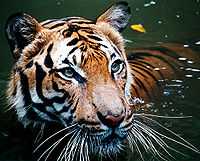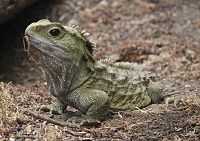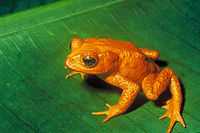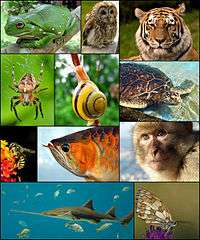Zoology

Zoology is a biological science that pertains to animals.
Genetics
"A recent comparison of the draft sequences of mouse and human genomes has shed light on the selective forces that have predominated in their recent evolutionary histories. In particular, mouse-specific clusters of homologues associated with roles in reproduction, immunity and host defence appear to be under diversifying positive selective pressure, as indicated by high ratios of non-synonymous to synonymous substitution rates. These clusters are also frequently punctuated by homologous pseudogenes. They thus have experienced numerous gene death, as well as gene birth, events. These regions appear, therefore, to have borne the brunt of adaptive evolution that underlies physiological and behavioural innovation in mice. We predict that the availability of numerous animal genomes will give rise to a new field of genome zoology in which differences in animal physiology and ethology are illuminated by the study of genomic sequence variations."[1]
Theoretical zoology
Def. "that part of biology which relates to the animal kingdom, including the structure, embryology, evolution, classification, habits, and distribution of all animals, both living and extinct"[2] is called zoology.
Mammalogy

Def. the "study of mammals"[3] is called mammalogy.
Ornithology
.jpg)
Def. "the scientific study of birds"[4] is called ornithology.
Dinosaurology

Def. "branch of paleontology that focuses on studying dinosaurs"[5] is called dinosaurology.
Herpetology

Def. a study of reptiles is called herpetology.
Ophiology
Def. the "study of snakes"[6]is called ophiology.
Batrachology

Def. the "study of amphibians"[7] is called batrachology.
Ichthyology
Def. "the study of fish"[8] is called ichthyology.
Considered a "living fossil" because it is an ancient class of lobe-limbed fish that went extinct more than 70 million years ago, the first living coelacanth was caught off the east coast of South Africa near the Chalumna River in 1938.
Today, at least two major populations of coelacanths are known: one off east Africa, and another near Indonesia. Coelacanths cannot be eaten; their flesh contains an oil that is highly distasteful to human beings.
This specimen in the image above weighs 160 pounds (72.6 kg) and measures 5.5 feet (1.67 m) in length.
Echinodermology
Def. study of the echinoderms is called echinodermology.
Lepidopterology

Def. the "scientific study of butterflies and moths"[9] is called lepidopterology.
On the right is an example of Callioratis grandis from Mulanje Mountain, Africa.
Parasitology
The "Acanthocephala, are descended from, and should be considered as, highly modified rotifers. Genetic research has determined this is unequivocal; the Acanthocephalans are modified rotifers".[10]
Biology

Def. the "study of all life or living matter"[11] is called biology.
On the right is a drawing of the archaean Haloquadratum walsbyi.
Taxonomy

Superregnum: Eukaryota[12] Regnums (Whittaker & Margulis, 1978): Animalia - Plantae - Fungi - Protista Regnums (Cavalier-Smith, 1981): Animalia - Plantae - Fungi - Chromista - Protozoa
Regnum: Animalia Phyla (36):
- Acanthocephala
- Annelida
- Arthropoda
- Brachiopoda
- Bryozoa
- Cephalorhyncha
- Chaetognatha
- Chordata
- Cnidaria
- Ctenophora
- Cycliophora
- Echinodermata
- Echiura
- Gastrotricha
- Gnathostomulida
- Hemichordata
- Kamptozoa
- Kinorhyncha
- Loricifera
- Micrognathozoa
- Mollusca
- Myxozoa
- Nematoda
- Nematomorpha
- Nemertea
- Onychophora
- Orthonectida
- Phoronida
- Placozoa
- Platyhelminthes
- Porifera
- Rhombozoa
- Rotifera
- Sipuncula
- Tardigrada
- Xenacoelomorpha
Research
Hypothesis:
- The genetic classification of animals may not match the current classification before genetic evidence.
Control groups

The findings demonstrate a statistically systematic change from the status quo or the control group.
“In the design of experiments, treatments [or special properties or characteristics] are applied to [or observed in] experimental units in the treatment group(s).[13] In comparative experiments, members of the complementary group, the control group, receive either no treatment or a standard treatment.[14]"[15]
Proof of concept
Def. a “short and/or incomplete realization of a certain method or idea to demonstrate its feasibility"[16] is called a proof of concept.
Def. evidence that demonstrates that a concept is possible is called proof of concept.
The proof-of-concept structure consists of
- background,
- procedures,
- findings, and
- interpretation.[17]
See also
- Biology
- School:Zoology
References
- ↑ Richard D. Emes, Leo Goodstadt, Eitan E. Winter and Chris P. Ponting (2003). "Comparison of the genomes of human and mouse lays the foundation of genome zoology". Human Molecular Genetics 12 (7): 701-9. doi:10.1093/hmg/ddg078. http://hmg.oxfordjournals.org/content/12/7/701.long. Retrieved 2014-05-18.
- ↑ "zoology, In: Wiktionary". San Francisco, California: Wikimedia Foundation, Inc. May 8, 2014. Retrieved 2014-05-18.
- ↑ "mammalogy, In: Wiktionary". San Francisco, California: Wikimedia Foundation, Inc. 16 December 2014. Retrieved 2015-02-23.
- ↑ "ornithology, In: Wiktionary". San Francisco, California: Wikimedia Foundation, Inc. 16 December 2014. Retrieved 2015-02-23.
- ↑ "dinosaurology, In: Wiktionary". San Francisco, California: Wikimedia Foundation, Inc. 4 February 2015. Retrieved 2015-02-23.
- ↑ "ophiology, In: Wiktionary". San Francisco, California: Wikimedia Foundation, Inc. 16 December 2014. Retrieved 2015-02-23.
- ↑ "batrachology, In: Wiktionary". San Francisco, California: Wikimedia Foundation, Inc. 16 June 2014. Retrieved 2015-02-23.
- ↑ Tedius Zanarukando (30 March 2005). "ichthyology, In: Wiktionary". San Francisco, California: Wikimedia Foundation, Inc. Retrieved 2015-02-23.
- ↑ "lepidopterology, In: Wiktionary". San Francisco, California: Wikimedia Foundation, Inc. 7 October 2013. Retrieved 2015-02-23.
- ↑ Ronald L. Shimek (January 2006). "Nano-Animals, Part I: Rotifers". ReefKeeping.com. Retrieved 2016-01-21.
- ↑ "biology, In: Wiktionary". San Francisco, California: Wikimedia Foundation, Inc. 23 February 2015. Retrieved 2015-02-23.
- ↑ "Eukaryota, In: Wikispecies". San Francisco, California: Wikimedia Foundation, Inc. 13 November 2015. Retrieved 2016-01-21.
- ↑ Klaus Hinkelmann, Oscar Kempthorne (2008). Design and Analysis of Experiments, Volume I: Introduction to Experimental Design (2nd ed.). Wiley. ISBN 978-0-471-72756-9. http://books.google.com/?id=T3wWj2kVYZgC&printsec=frontcover.
- ↑ R. A. Bailey (2008). Design of comparative experiments. Cambridge University Press. ISBN 978-0-521-68357-9. http://www.cambridge.org/uk/catalogue/catalogue.asp?isbn=9780521683579.
- ↑ "Treatment and control groups, In: Wikipedia". San Francisco, California: Wikimedia Foundation, Inc. May 18, 2012. Retrieved 2012-05-31.
- ↑ "proof of concept, In: Wiktionary". San Francisco, California: Wikimedia Foundation, Inc. November 10, 2012. Retrieved 2013-01-13.
- ↑ Ginger Lehrman and Ian B Hogue, Sarah Palmer, Cheryl Jennings, Celsa A Spina, Ann Wiegand, Alan L Landay, Robert W Coombs, Douglas D Richman, John W Mellors, John M Coffin, Ronald J Bosch, David M Margolis (August 13, 2005). "Depletion of latent HIV-1 infection in vivo: a proof-of-concept study". Lancet 366 (9485): 549-55. doi:10.1016/S0140-6736(05)67098-5. http://www.ncbi.nlm.nih.gov/pmc/articles/PMC1894952/. Retrieved 2012-05-09.
External links
- African Journals Online
- Bing Advanced search
- GenomeNet KEGG database
- Google Books
- Google scholar Advanced Scholar Search
- Home - Gene - NCBI
- JSTOR
- Lycos search
- NASA/IPAC Extragalactic Database - NED
- NASA's National Space Science Data Center
- NCBI All Databases Search
- NCBI Site Search
- Office of Scientific & Technical Information
- PsycNET
- PubChem Public Chemical Database
- Questia - The Online Library of Books and Journals
- SAGE journals online
- The SAO/NASA Astrophysics Data System
- Scirus for scientific information only advanced search
- SpringerLink
- Taylor & Francis Online
- WikiDoc The Living Textbook of Medicine
- Wiley Online Library Advanced Search
- Yahoo Advanced Web Search
| |||||||||||||||||||||||||||||||||||||||||||||||||||||
| ||||||||||||||||||||||||||||||||||||||||||||||||||||||||||||||
| |||||||||||||||||||||||||||||||||||||||||
| |||||||||||||||||||||||||||||||||||||||||||||||||||||
| ||||||||||||||||||||||||||||||||||||||||||||
| |||||||||||||||||||||||||||||||||||
![]() This is a research project at http://en.wikiversity.org
This is a research project at http://en.wikiversity.org
| |
Development status: this resource is experimental in nature. |
| |
Educational level: this is a research resource. |
| |
Resource type: this resource is an article. |
| |
Resource type: this resource contains a lecture or lecture notes. |
| |
Subject classification: this is a biology resource . |
| |
Subject classification: this is a genetics resource. |